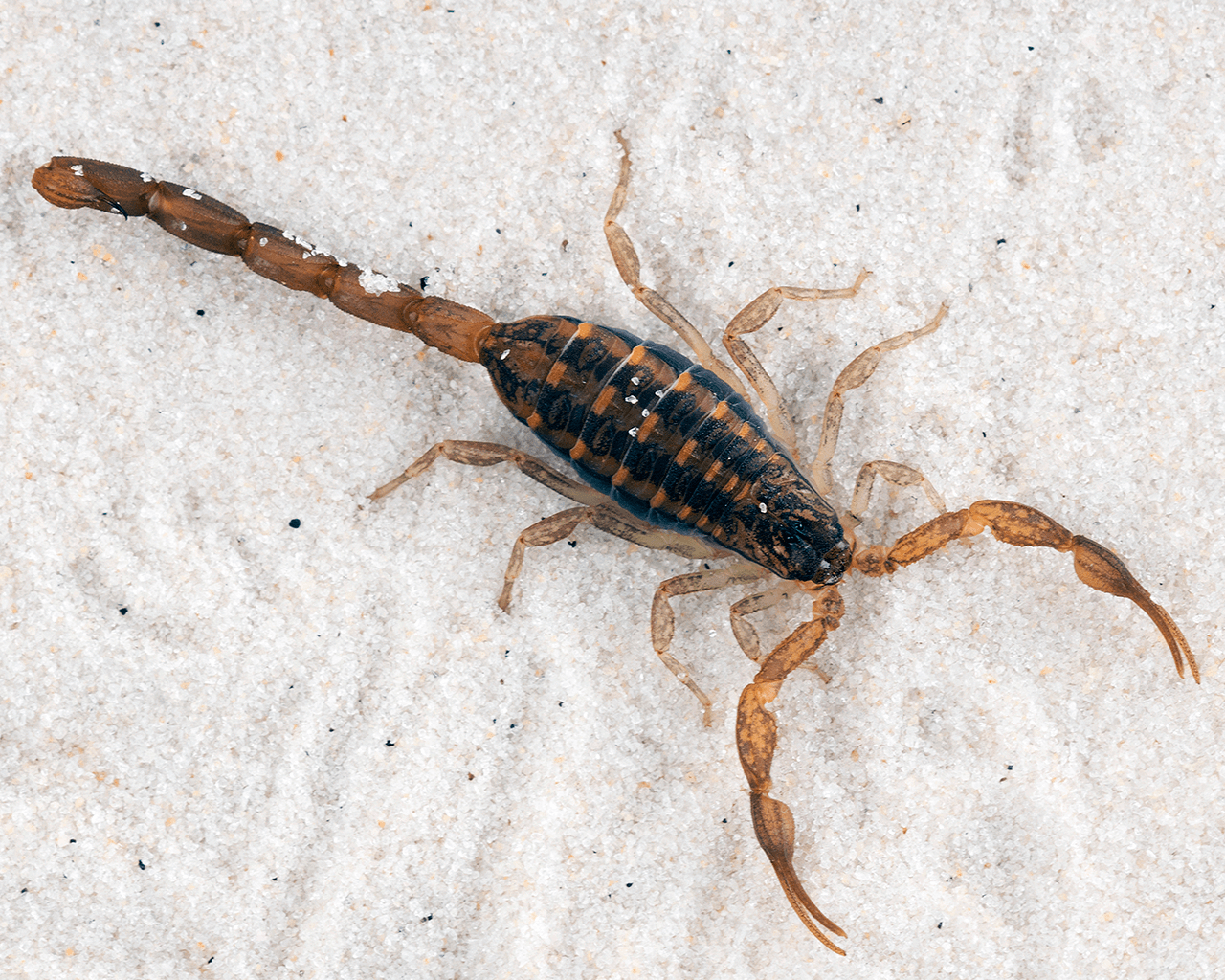Several scorpion species can be found in San Antonio, some of which are known to invade homes in large numbers. Scorpions frequently enter San Antonio homes to seek refuge from bouts of dry and/or very hot weather, and they will also enter homes to escape rising water levels caused by heavy rainfall. Since scorpions have evolved to thrive in arid conditions, drastic changes in temperature and rainfall during the summer months will prompt the arachnids to move indoors where a relatively stable environment can be secured. While indoors, scorpions remain in dark hiding spots during the day before coming out at night, which is when homeowners often notice their presence. The scorpion species most commonly found within and around San Antonio homes is Centruroides vittatus, or the “striped bark scorpion,” as the species is more commonly known.
It is hard to miss a scorpion crawling about indoors, but the striped bark scorpion’s relatively small 2 ½ inch length can make them hard to spot. Unlike many scorpion species, the striped bark scorpion is a capable climber, and they are often found congregating on the shaded sides of homes on excessively hot days. These scorpions often enter homes through attic vents after climbing exterior walls of homes and climbing trees with branches that make contact with homes. The venom produced by striped bark scorpions is not considered medically harmful to most people, but those with an allergy to their venom may experience a potentially fatal case of anaphylaxis following stings. Between 2005 and 2015, 185,402 thousand scorpion stings were reported in the US, and Texas was the state with the second highest number of reported sting incidents following Arizona. In Texas, San Antonio was the city with the highest recorded sting rate, but luckily, none of these stings resulted in fatalities.
Have you ever found a scorpion within your home?

